Places to visit Spiti in July | By Enthutraveller
Table of Contents
7 Places to visit in Spiti Valley in July
Spiti Valley in July offers stunning views, long roads, adventure activities, and great weather. Know about must-see locations, and more. Spiti Valley, sometimes known as “Little Tibet,” is a stunning high-altitude location in Himachal Pradesh that is tucked away in the center of the Himalayas. This isolated haven, well-known for its breathtaking scenery, historic monasteries, and rich cultural legacy, provides visitors looking for peace and adventure with an experience they won’t soon forget.
Spiti Valley, which has an average elevation of 12,500 feet (3,800 meters), is one of the world’s highest populated areas. It is a paradise for thrill-seekers and nature lovers alike because of its untamed landscape, spectacular topography, and constantly shifting weather. “Spiti” means “the middle land,” referring to its historical significance as a commerce route connecting Tibet and India.
You’re going to have an amazing experience if you’re thinking about visiting Spiti Valley in July. The valley reveals a world of wonders, from pure rivers to mysterious monasteries. In July, let’s explore the must-see locations in Spiti Valley.
Best Time to Visit Spiti Valley in July
Since Spiti Valley is a year-round attraction, June is a really lovely time to go. Because of the abundant foliage, colorful blooms, and ideal weather for outdoor activities, this month is regarded as one of the greatest times of year to visit the valley.
This high-altitude Himalayan desert experiences warm, comfortable temperatures in June. The optimal temperature range for walking, touring, and taking in the tranquil beauty of the valley is 15°C to 25°C (59°F to 77°F) throughout the day. Spiti is transformed into a magnificent paradise with shimmering streams, rolling green meadows, and distant snow-capped hills as the winter snow slowly melts.
June provides the ideal respite from the bitter winter cold and the monsoon rains that follow in July and August, with daytime highs of 10°C to 20°C. As the snow melts, the valley becomes simpler to reach, facilitating exploration and travel. Spiti Valley in June guarantees an amazing experience, whether you choose to see historic monasteries, engage in exhilarating activities, or simply take in the pristine scenery!
Places to Visit in Spiti Valley in July
1. Key Monastery
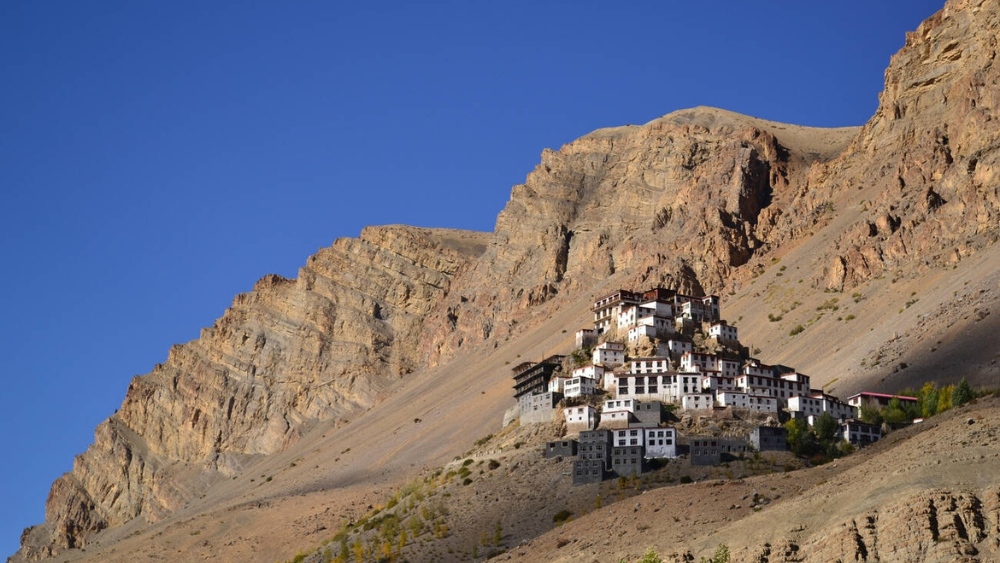
The stunning Tibetan Buddhist monastery known as Key Monastery, or Ki Gompa, is located in the Spiti Valley of Himachal Pradesh at an elevation of 13,668 feet. With breathtaking views of the Spiti River and snow-capped hills, this monastery, which is more than a millennium old, is the biggest and most recognizable in the area.
Key Monastery, which was constructed in the shape of a fortress, has seen several natural disasters and invasions over the years. Ancient murals, rare thangka paintings, holy texts, and a tranquil meditation hall can all be found inside. The monastery, which has more than 250 monks, is a significant hub for Buddhist education and spiritual retreats.
Enjoy in prayer rituals, converse with monks, or just take in the ethereal atmosphere of the monastery. Because the roads are accessible and the weather is nice, May through October is the ideal time to go. A visit to Key Monastery is a once-in-a-lifetime opportunity to see the spiritual core of Spiti.
- Highlights: Stunning views, Tibetan murals, ancient scriptures
- Best Time to Visit: Early morning for peaceful prayers
2. Chandratal Lake

One of the most breathtaking natural beauties in the Spiti Valley is Chandratal Lake, sometimes known as the “Moon Lake.” At 4,300 meters above sea level, this crescent-shaped lake is encircled by verdant meadows and snow-capped hills, making for a captivating scene. A haven for adventurers, photographers, and nature lovers, the lake’s glistening waters mirror the shifting colors of the sky.
Since the snow melts in July and the roads become accessible, it’s the ideal time of year to visit Chandratal. An experience that will never be forgotten is camping by the lake while the stars are shining. Trekkers can also take a look at the beautiful paths that stretch from Batal to the lake. Chandratal Lake offers a mystical haven in the middle of the Himalayas, whether you’re looking for tranquility, excitement, or stunning vistas. Make sure to include this calm yet exciting location on your Spiti Valley itinerary!
- Highlights: Crystal-clear lake, breathtaking mountain reflections
- Best Time to Visit: Early morning or sunset
3. Tabo Monastery
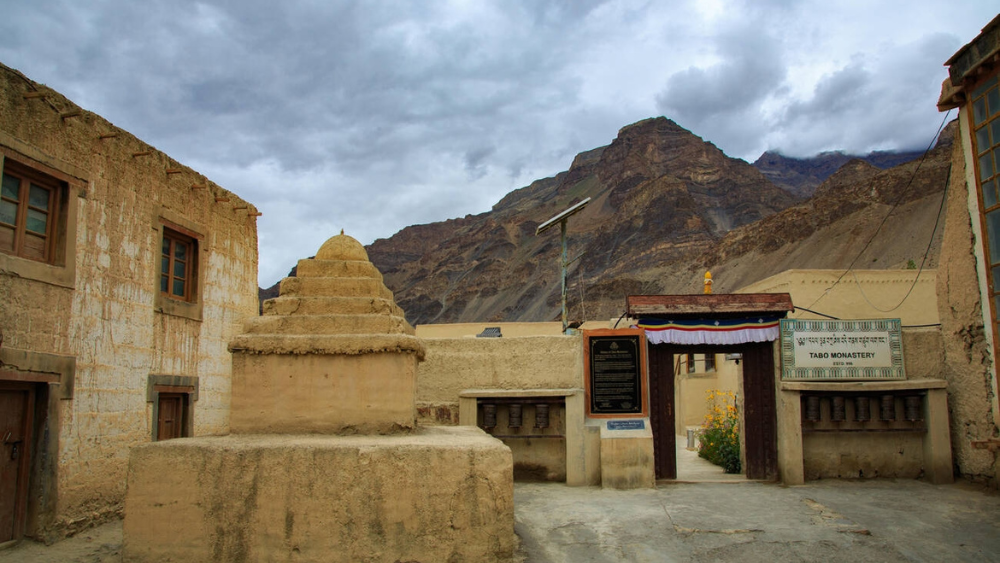
Known as the “Ajanta of the Himalayas,” Tabo Monastery is one of India’s oldest and most venerable Buddhist monasteries. This historic monastery in Spiti Valley, which was established in 996 AD, is a UNESCO World Heritage Site and a refuge for pilgrims. Located at an elevation of 10,007 feet, Tabo Monastery is well-known for its elaborate stucco sculptures that portray Buddhist teachings, centuries-old paintings, and beautiful murals. Tabo is conveniently located on the valley plain, unlike other monasteries that are high on hills.
Visitors can get a taste of the monastery’s rich history and spiritual significance by touring its nine temples, stupas, and monks’ quarters. It is the ideal location for meditation and peace seekers due to its tranquil atmosphere and untamed mountain backdrop. A must-see location in the Spiti Valley is Tabo Monastery, which is like entering a living museum of Tibetan Buddhist culture.
- Highlights: UNESCO heritage site, murals, caves of meditation
- Best Time to Visit: Daytime exploration
4. Pin Valley National Park
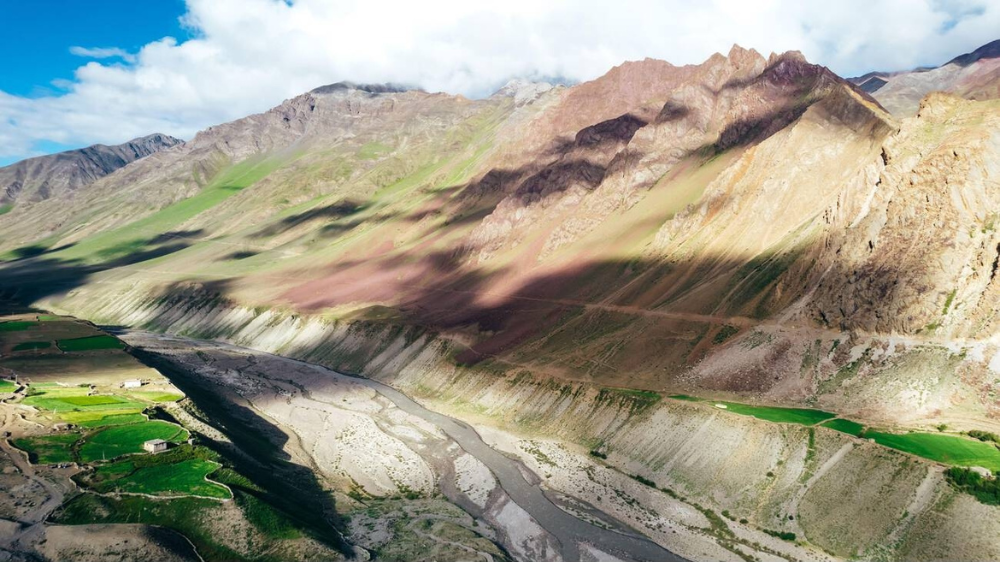
A haven for adventurers and wildlife enthusiasts, Pin Valley National Park is tucked away in the chilly Spiti desert in Himachal Pradesh. Spanning over 970 sq. km, this high-altitude park is home to unique Himalayan fauna, including the elusive snow leopard, ibex, red fox, and Himalayan wolf. Trekkers and photographers will love the park’s stunning scenery, which includes rocky mountains, glacial streams, and verdant meadows.
The greatest time to go is in July, when the snow melts and the pathways become clear and the vegetation is bright. Exciting experiences can be had on well-known treks like Bhaba Pass and Pin-Parvati Pass. With its traditional Spitian villages and old Buddhist monasteries, the park is also a center of culture. Pin Valley National Park provides a memorable escape into the unadulterated splendor of the Himalayas, whether you’re looking for wildlife encounters, picturesque hikes, or peaceful retreats.
- Highlights: Wildlife spotting (snow leopards, ibex), scenic trekking routes
- Best Time to Visit: Morning or evening safaris
5. Hikkim Village (World’s Highest Post Office)

At a height of 14,567 feet, Hikkim Village, a stunning location in the center of Spiti Valley, is home to the highest post office in the world. This isolated Himalayan village, encircled by rocky mountains, desolate terrain, and unspoiled beauty, provides a respite from the bustle of the metropolis. In addition to interacting with the friendly residents and experiencing the distinctive Spitian culture, visitors can even send a postcard from the highest post office on Earth.
Due to being close to Komic and Langza, the village is a must-see destination on your Spiti itinerary. Adventurers and photographers will enjoy the vast landscapes, charming mud houses, and peaceful atmosphere. Whether you decide to trek, visit Buddhist monasteries, or just enjoy the tranquility, Pin Hikkim Village offers an experience that will never be forgotten. Choose May through September for the best weather and accessibility.
- Highlights: Send a postcard from the world’s highest post office (4,440m)
- Best Time to Visit: Daytime
6. Langza Village
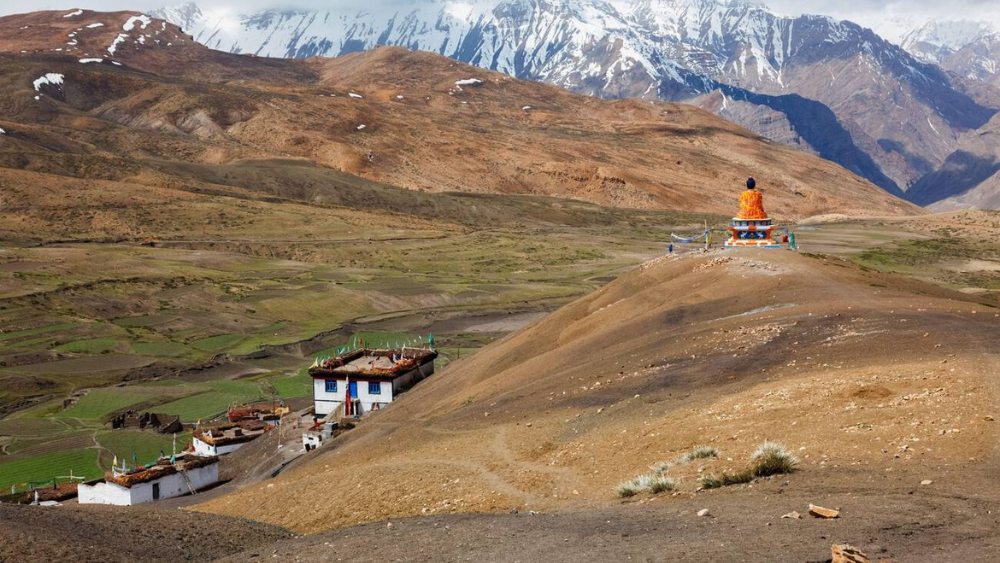
A hidden riches in Spiti Valley, Langza Village is perched at 14,500 feet and offers stunning vistas of the snow-capped Himalayas. Langza, also referred to as the “Fossil Village,” is well-known for its extensive collection of marine fossils that date back millions of years, when the area was covered by the Tethys Sea. The tall golden Buddha statue that dominates the valley and creates a serene and spiritual atmosphere is the focal point of this charming settlement.
Photographers, hikers, and culture vultures will love Langza, which is surrounded by verdant meadows and historic mud-brick homes. Additionally, the town is a great spot to meet residents and experience their straightforward but contented way of life. Langza, which is best visited from May to September, offers unique travel experiences, pristine air, and strange vistas. Remember to mail a postcard from the Hikkim Post Office nearby and check out the fossils!
- Highlights: Fossil hunting, giant Buddha statue
- Best Time to Visit: Afternoon for best lighting
7. Komic Village (Highest Motorable Village in the World)
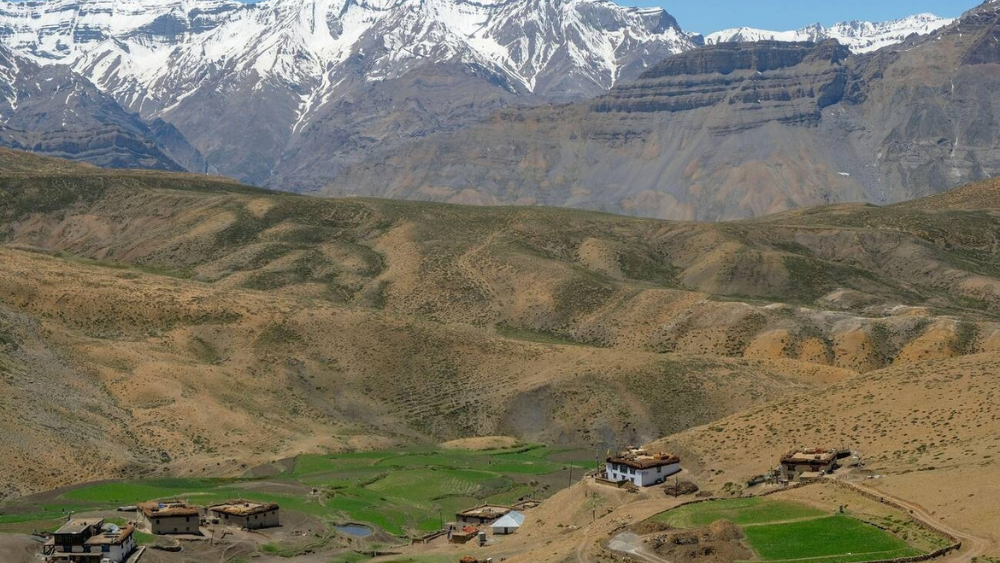
Komic settlement is the world’s highest motorable settlement, perched at an incredible 15,027 feet in the center of Spiti Valley. For those looking for peace and adventure, this charming village, encircled by snow-capped peaks and desolate surroundings, provides a strange experience. Tangyud Monastery, a historic Buddhist monastery thought to be more than 500 years old, is located in the area. There, monks engage in intense meditation amid the mountains.
For those who enjoy the outdoors, photography, and cultural exploration, Komic is a paradise. It is a must-visit location because of the stunning Himalayan range views, the friendly population, and the straightforward Spitian way of life. Komic is the ideal destination for anyone seeking unique travel experiences. This village, which is best visited from May to September, is isolated from the outside world during the severe winter months. A trip here is guaranteed to be incredibly moving.
- Highlights: Monastery, stunning mountain views
- Best Time to Visit: Afternoon to enjoy the sunshine
Conclusion
July travel to Spiti Valley offers visitors breath-taking scenery, thrilling roads, and an insight into the vibrant Buddhist culture. This is the ideal time to see the ‘Middle Land’ in all its splendor, with clean roads, good weather, and lively monasteries. Spiti Valley in July will leave you with priceless memories, whether you’re a family vacationer, motorcycle rider, or solitary tourist.
FAQs
Is July a good time to visit Spiti Valley?
Yes, July is a great time to visit Spiti Valley as the roads are open, the weather is pleasant, and the landscape is breathtaking with lush valleys, melting glaciers, and clear blue skies.
What is the temperature in Spiti Valley in July?
In July, Spiti Valley experiences daytime temperatures ranging from 15°C to 25°C and nighttime temperatures between 5°C to 10°C, making it ideal for outdoor exploration.
Are the roads to Spiti Valley open in July?
Yes, both the Manali-Spiti and Shimla-Spiti routes are open in July. However, occasional landslides due to monsoon rains in the lower regions (especially on the Manali route) can cause delays.
What should I pack for Spiti Valley in July?
Pack warm clothes, waterproof jackets, sturdy trekking shoes, sunscreen, sunglasses, medicines for altitude sickness, and power banks as electricity can be scarce in some villages.
Can I see snow in Spiti Valley in July?
While most of the lower areas are free from snow, higher passes like Kunzum Pass and glaciers in Pin Valley may still have some snow, offering stunning views.
Disclaimer
This article is for informational purposes only. All the information and details may change over time. Please check the official website or contact the venue for the most accurate and updated information.
By: Enthutraveller

